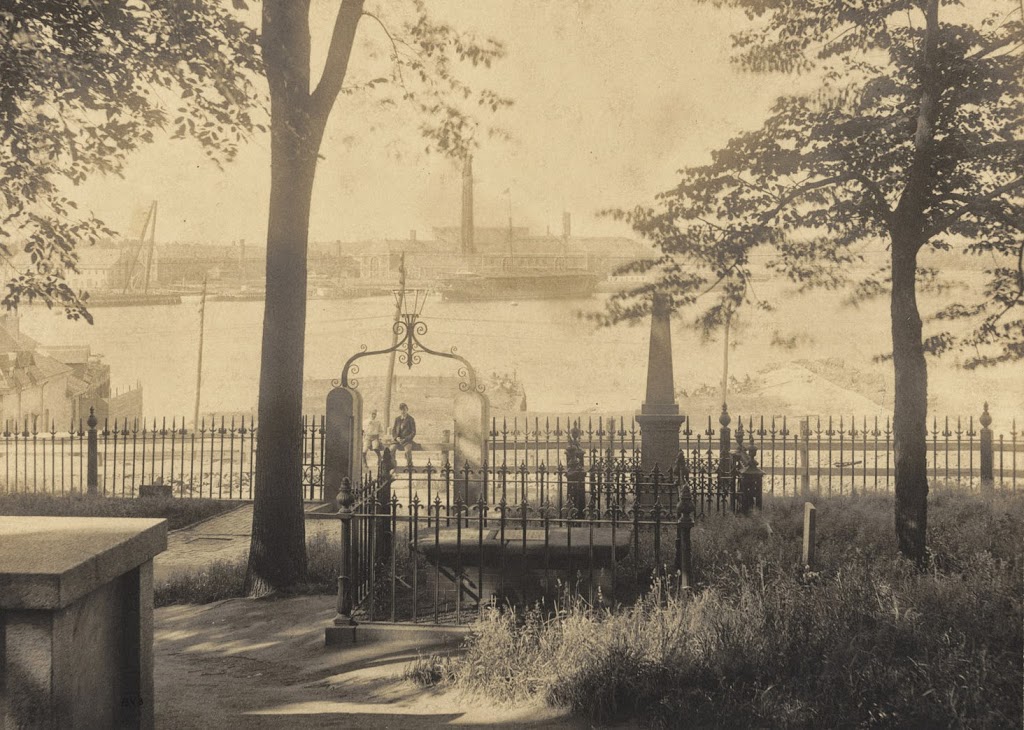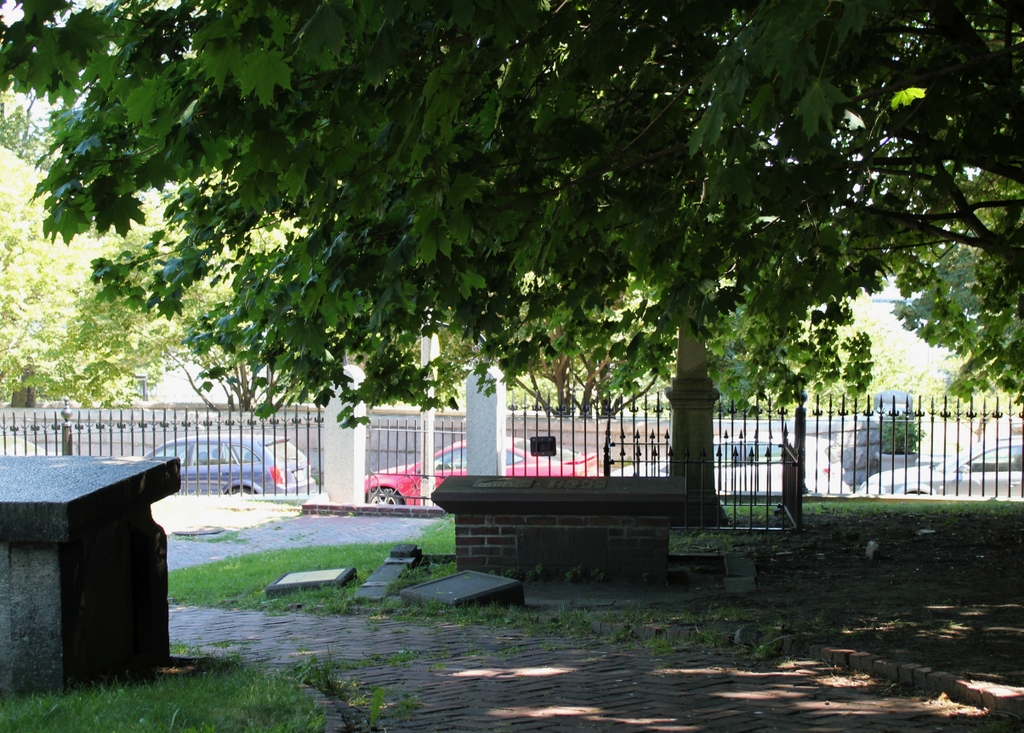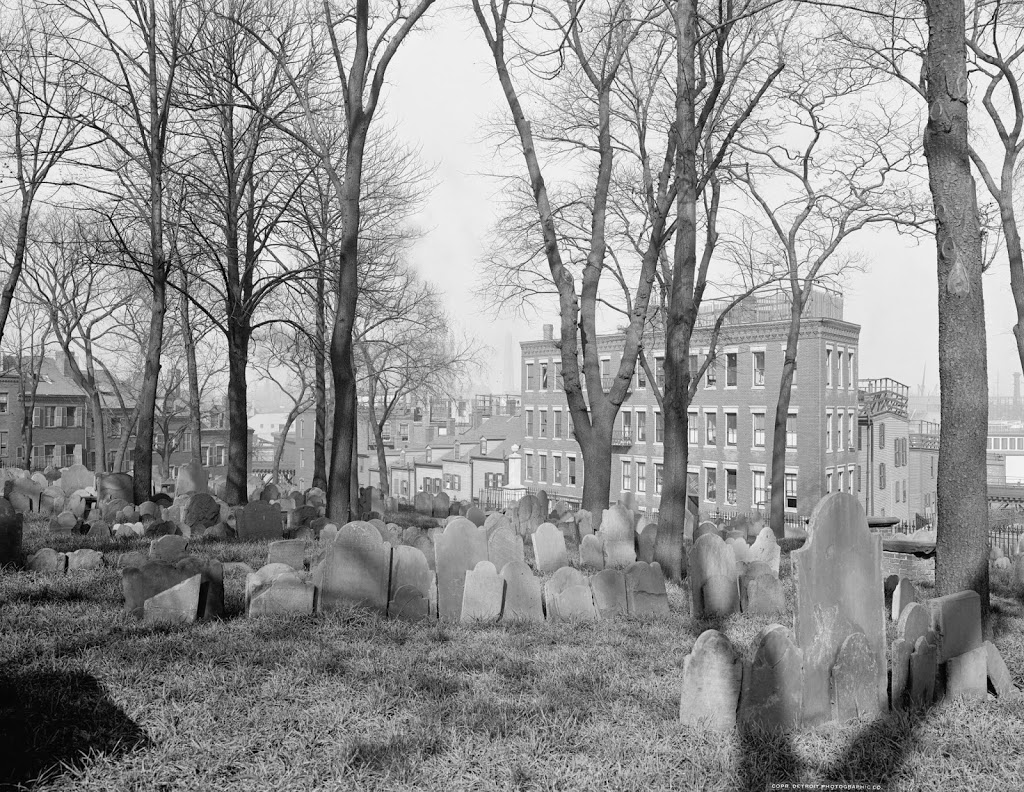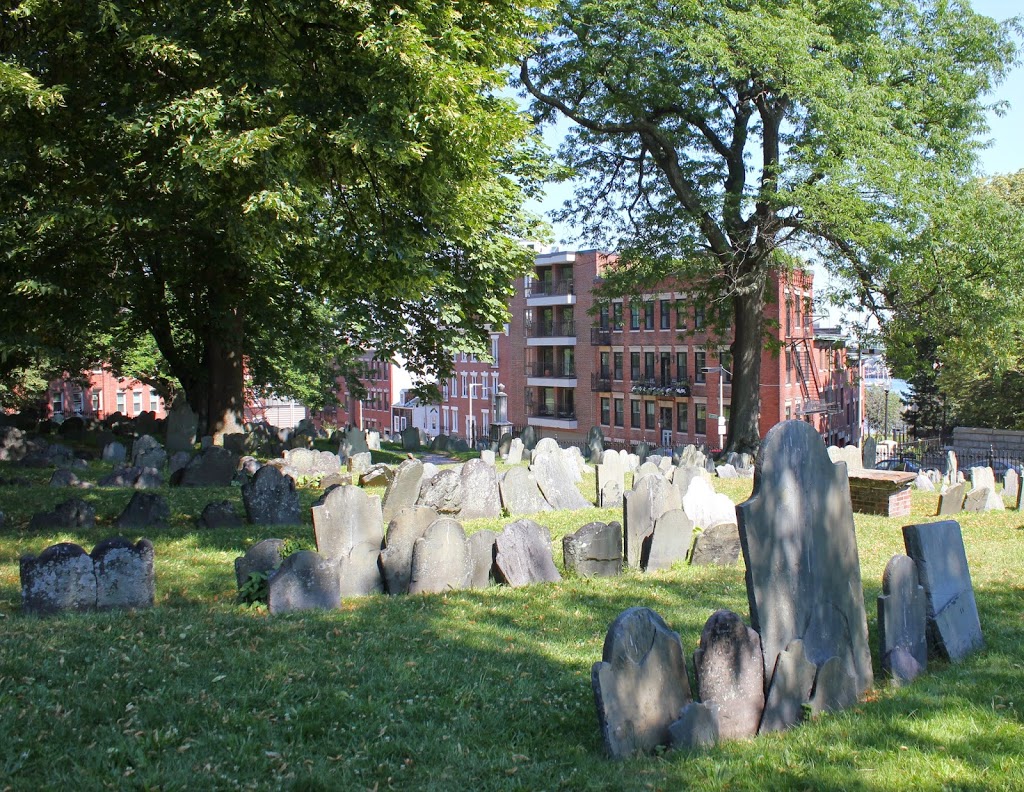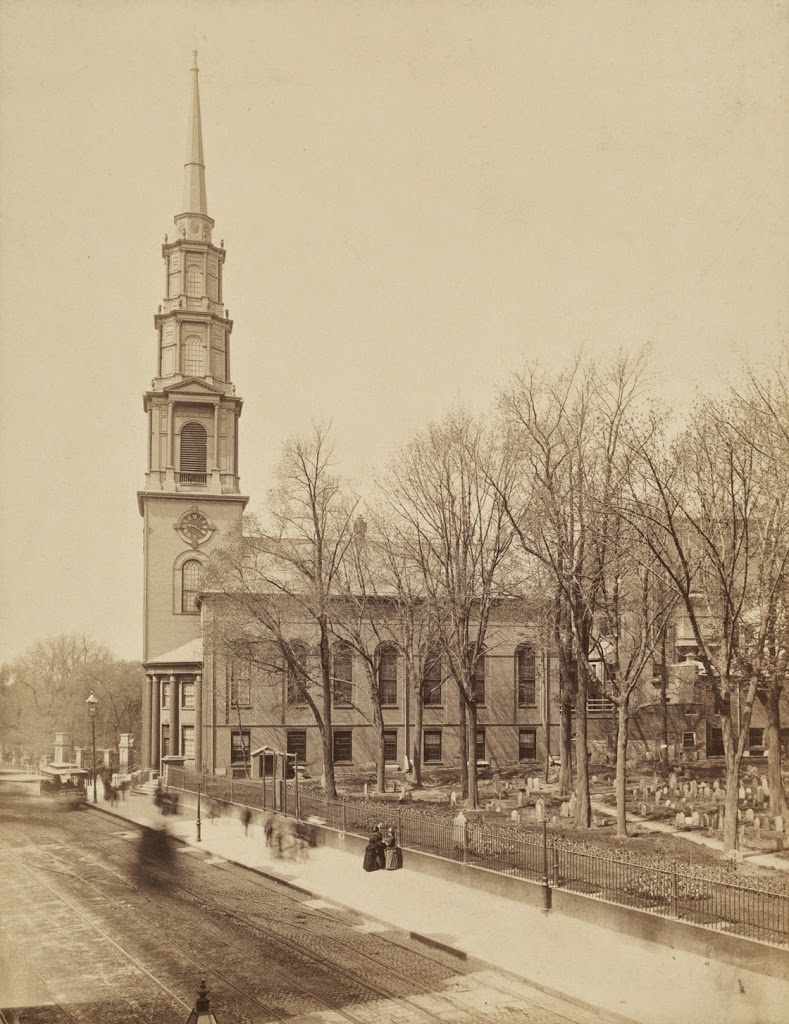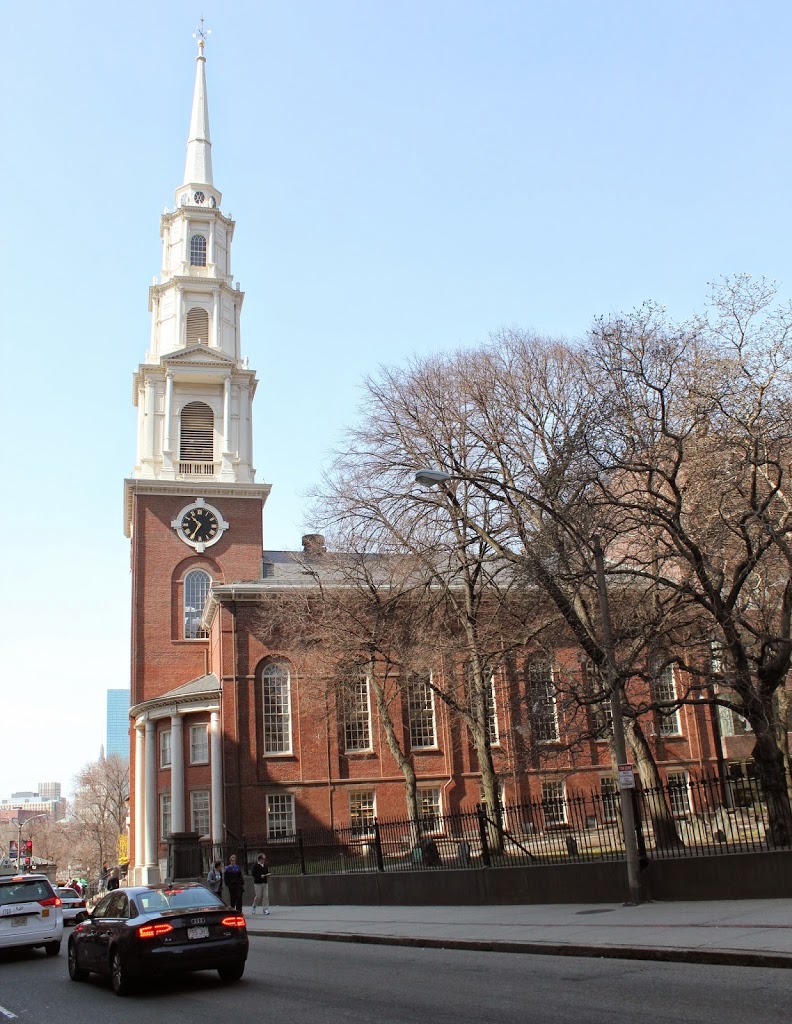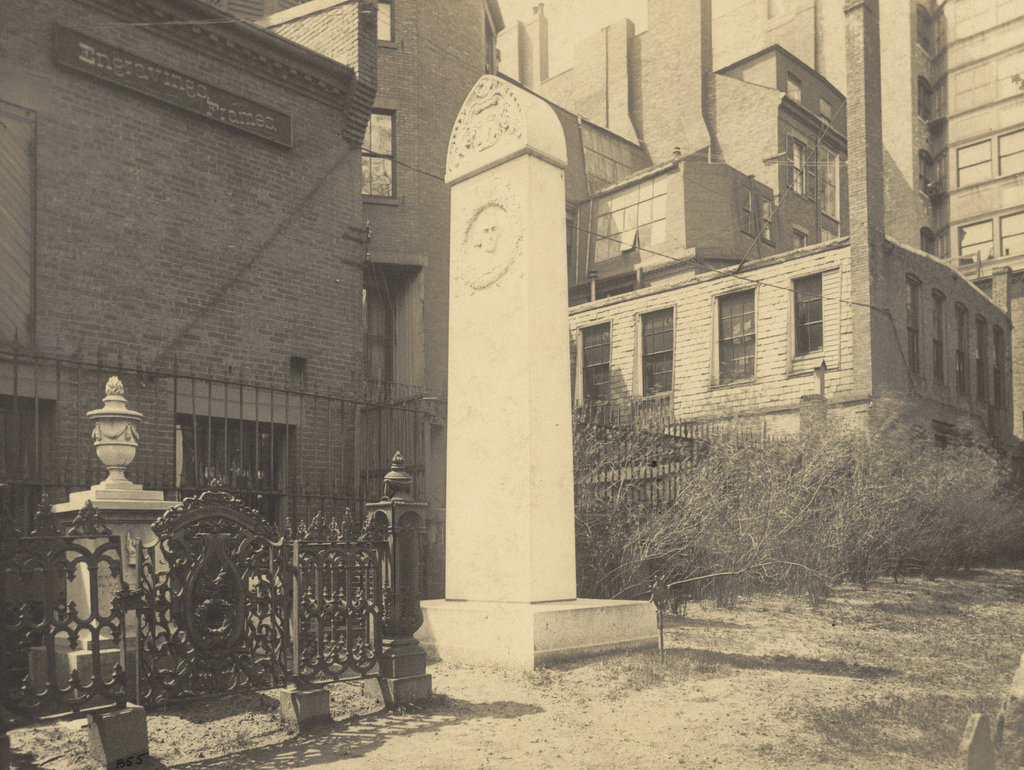The view looking toward Boston Harbor and the Charlestown Navy Yard from Copp’s Hill Burying Ground in the North End, around 1898. Photo courtesy of Boston Public Library.
The same scene in 2014:
Aside from the missing wrought-iron railing around the tomb in the foreground, not much has changed in the cemetery in the past century or so. Even the gate and the fence around the cemetery are the same. The background is different, but it’s hard to tell with the tree blocking the view. Most of the navy yard buildings are still there, although it is no longer an active military facility.
See this post for another scene in Boston’s second oldest cemetery.

